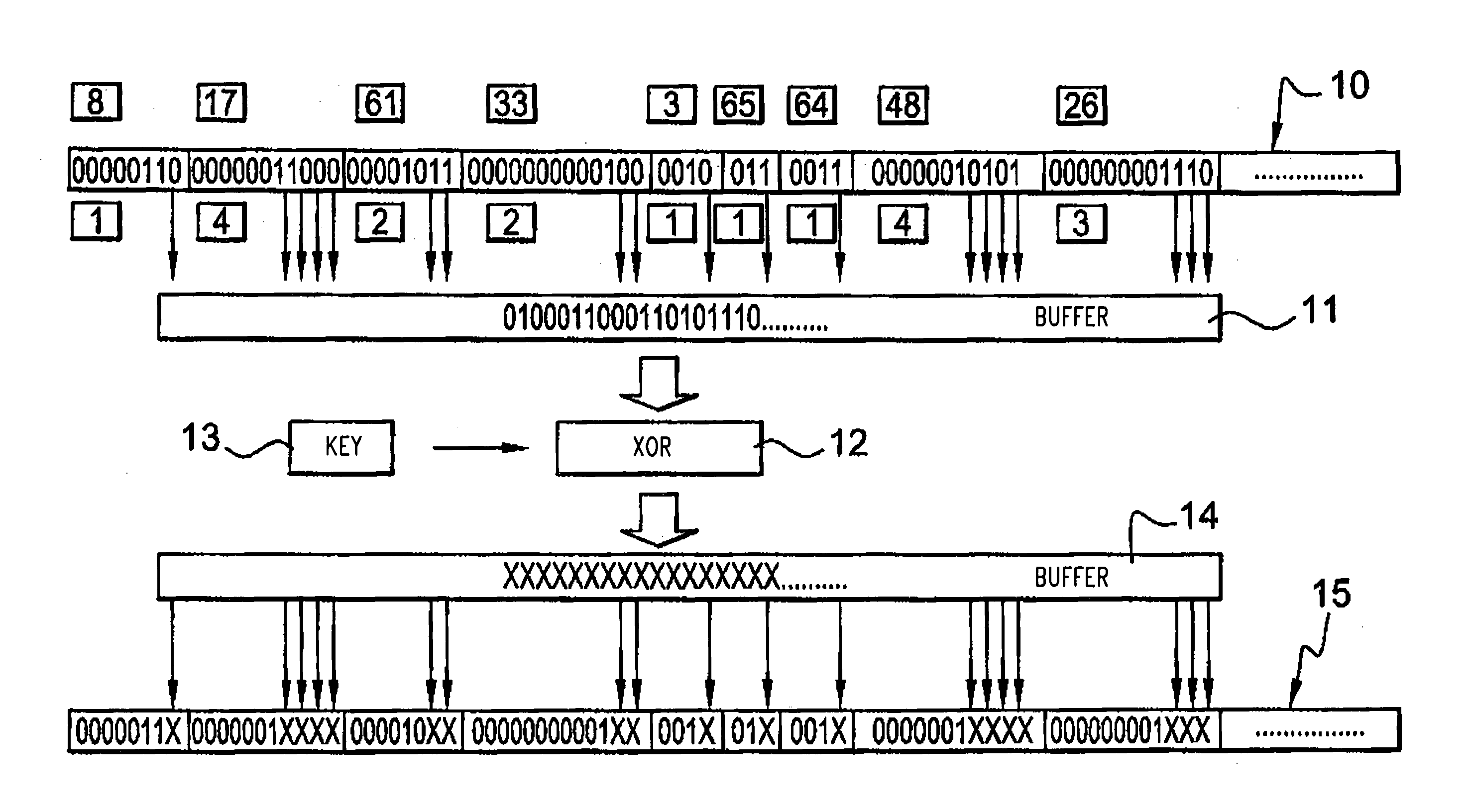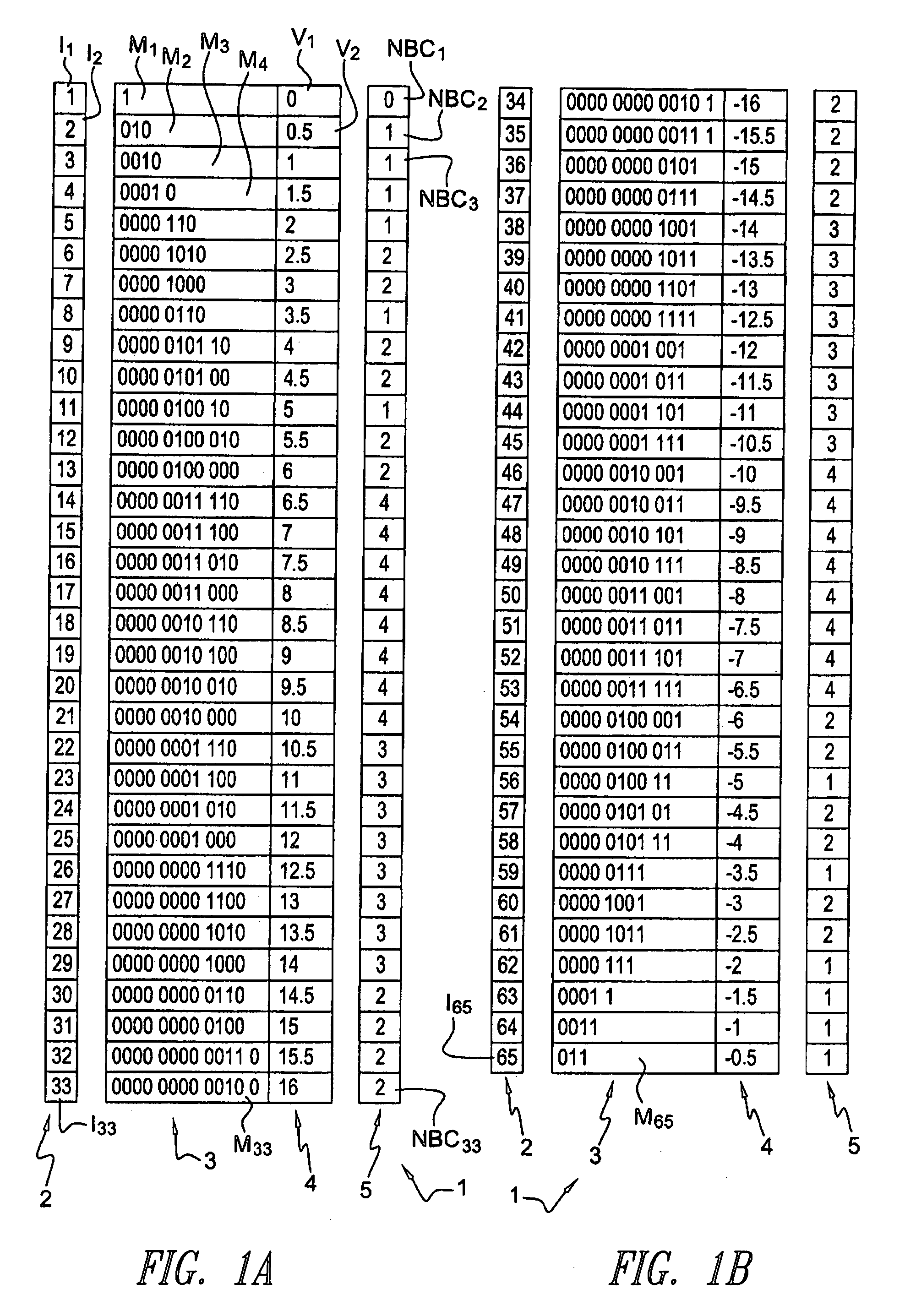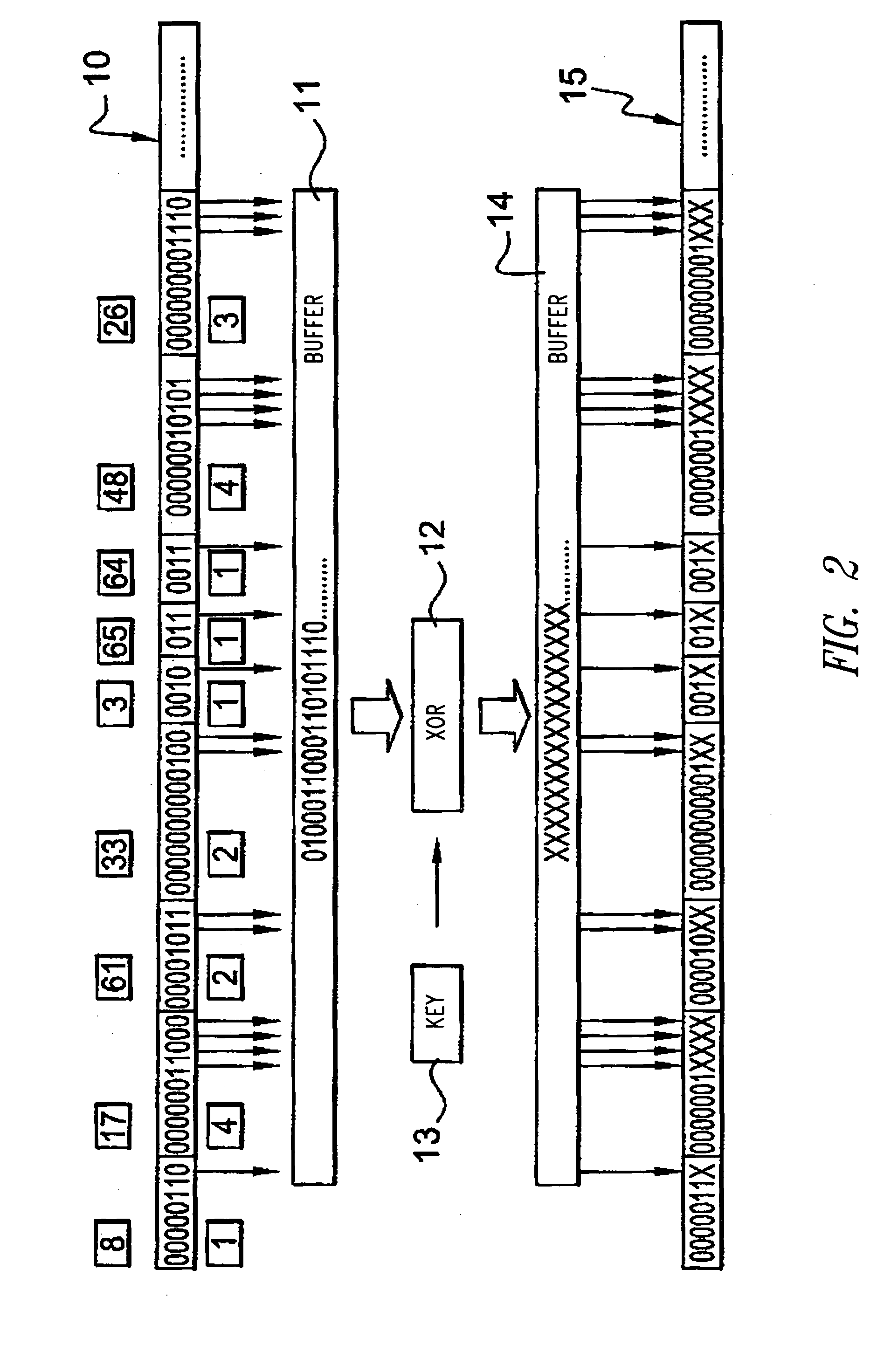Method for ciphering a compressed audio or video stream preserving the coding syntax
a compression audio or video and coding syntax technology, applied in the field of processing compressed data, can solve the problems of reducing the security of video document distribution,
- Summary
- Abstract
- Description
- Claims
- Application Information
AI Technical Summary
Benefits of technology
Problems solved by technology
Method used
Image
Examples
Embodiment Construction
[0051] According to one embodiment of the present invention, the method for ciphering an MPEG4 stream or other compressed stream using variable length codes (codewords), is such that the ciphered stream complies with the standard (MPEG4 or other), due to the fact that the ciphered codewords are valid codewords (compliant with the standard) coming from the same table of codes.
[0052] Therefore, all the bits of the codeword are ciphered that are such that, after randomly changing their value, the new codeword is still valid, i.e. it is still part of the same table; and preferably only bits of codewords representing useful data (motion vectors and DCT coefficients of texture) are ciphered.
[0053] The embodiment has several advantages compared to the cipher of sign bits only: [0054] a more significant visual darkening is obtained; [0055] the resistance of the ciphered stream to attacks is better, thanks to a greater number of ciphered bits; [0056] as the number of modified bits is great...
PUM
 Login to View More
Login to View More Abstract
Description
Claims
Application Information
 Login to View More
Login to View More - R&D
- Intellectual Property
- Life Sciences
- Materials
- Tech Scout
- Unparalleled Data Quality
- Higher Quality Content
- 60% Fewer Hallucinations
Browse by: Latest US Patents, China's latest patents, Technical Efficacy Thesaurus, Application Domain, Technology Topic, Popular Technical Reports.
© 2025 PatSnap. All rights reserved.Legal|Privacy policy|Modern Slavery Act Transparency Statement|Sitemap|About US| Contact US: help@patsnap.com



